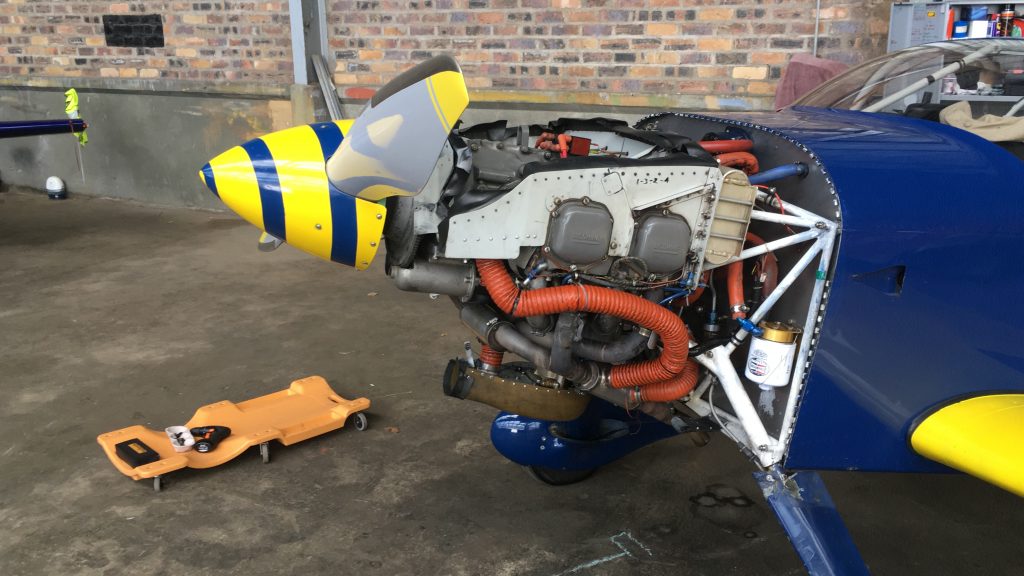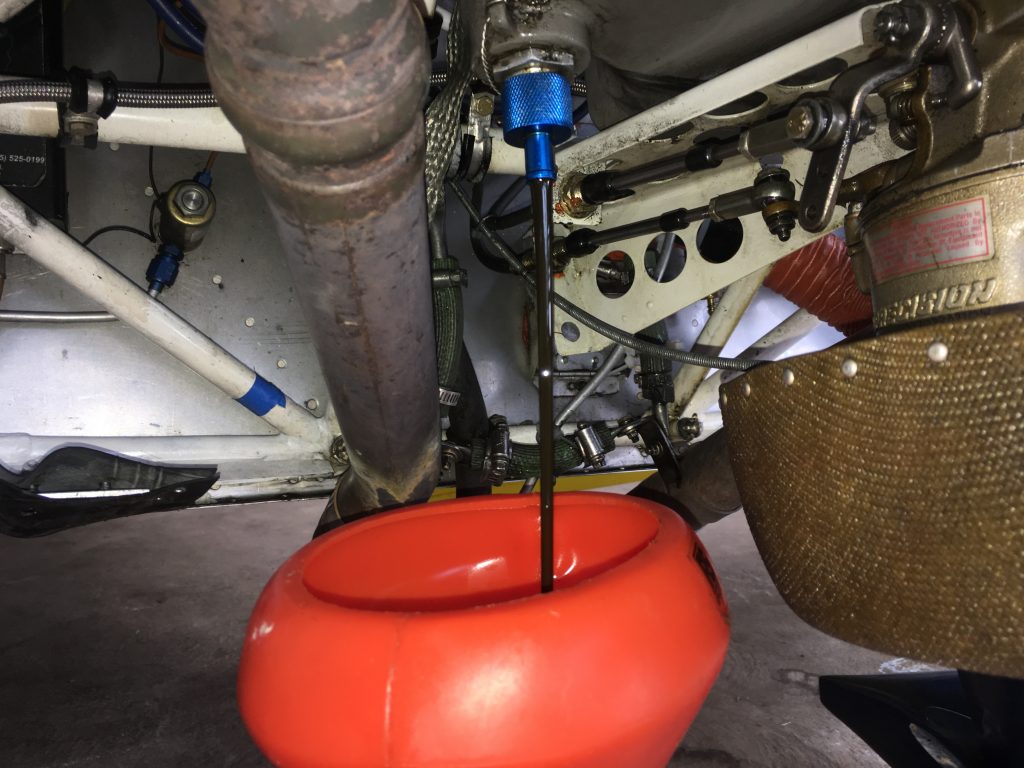Post flight checks revealed oil dripping from the lower cowling. Not a giant deluge but not normal for this engine, which is usually nice and dry. Other engines leak to differing degrees…Danny in North Carolina flies a Chipmunk with an old Gipsy Major engine which leaks a lot – he says if it’s not leaking that’s the time to start worrying. In our case, any leak is a concern, so a little bit of investigation was called for…

Cowlings off and having a look. We found oil inside the left side of the lower cowl but not the right. A closer look on the left side of the engine revealed what looked like a leak from the oil sump gasket. We have a spare one in the parts cupboard so that’s good. Not so good it’s quite fiddly to get to. I was having a rant but Brenda said “Taking bits off is a great way to get to know your engine” – and she’s right.
The sump is on the bottom of the engine and will need to be lowered. It’s obviously easier to do that when it’s light and not full of oil, and as we’d just landed the oil was warm and free flowing so I decided to drain the tank there and then.
Draining the oil on both the Eindecker and the Sting could be messy processes, but this engine is fitted with a quick release drain plug. The standard is just a drain plug which unscrews…at some point in the process the oil starts to flow all over and around the spanner in all sorts of strange directions, and once removed the plug usually needs to be fished out of a pan of hot oil. It can be a very filthy task.
The quick drain makes it clean, simple and spannerless. Just position the receiving funnel underneath, push up on the drain to open, and turn a quarter turn to lock it open. Stand back and admire the oil flowing with no mess. All for $100.

Whoever designed this quick release drain is a genius. So simple but so effective. When we build our aircraft we’ll definitely incorporate one.
